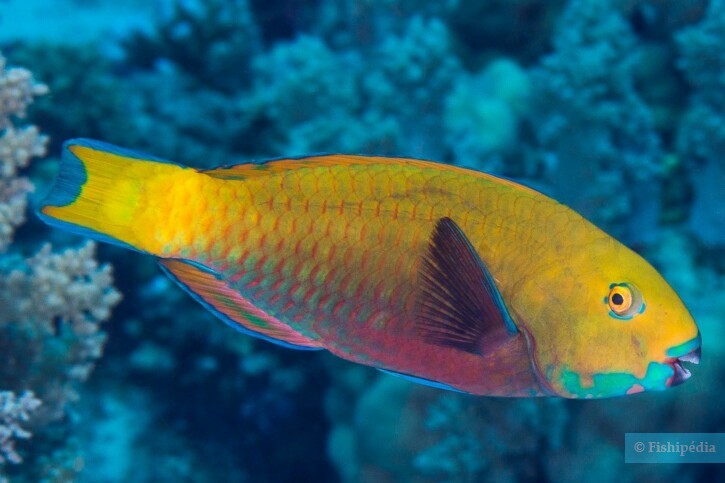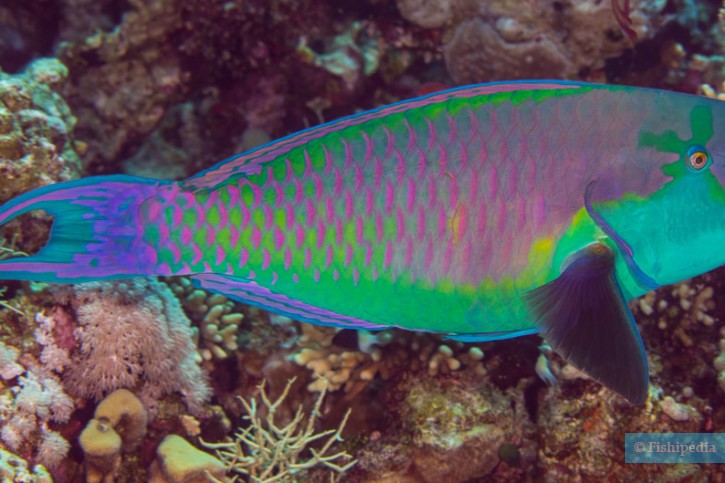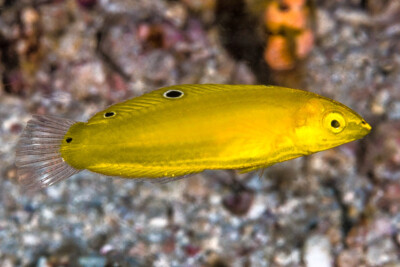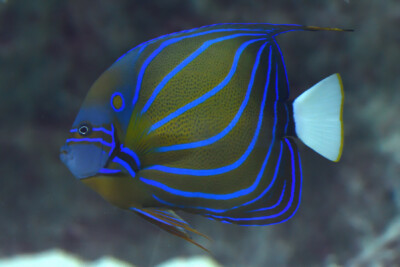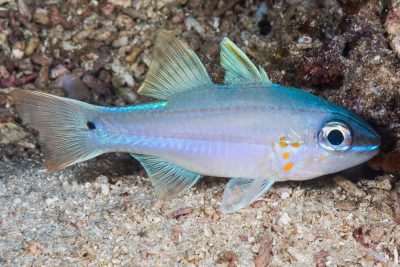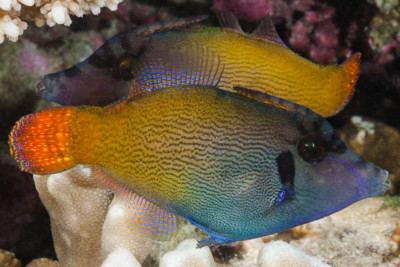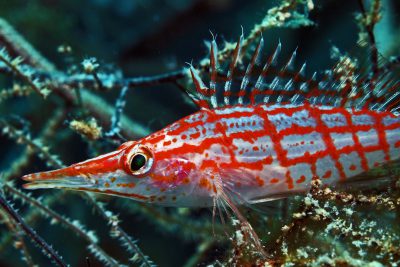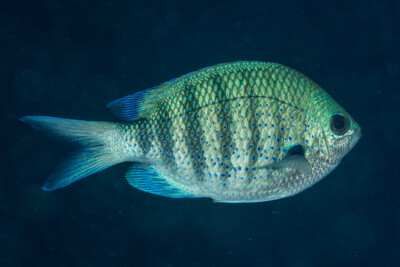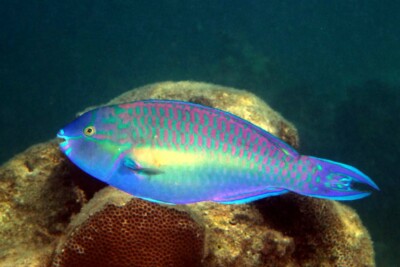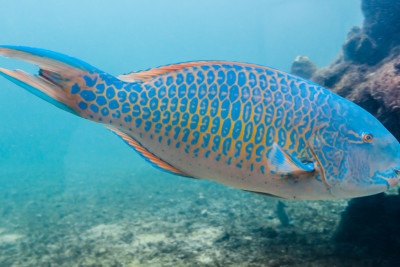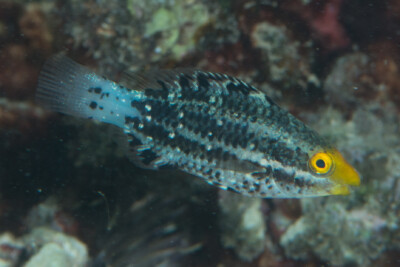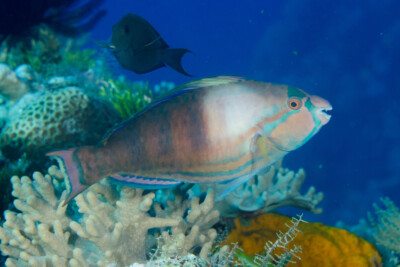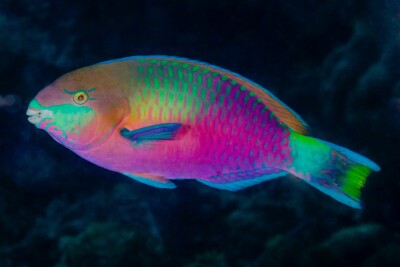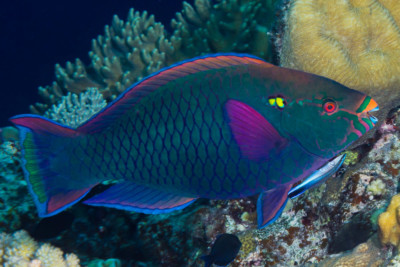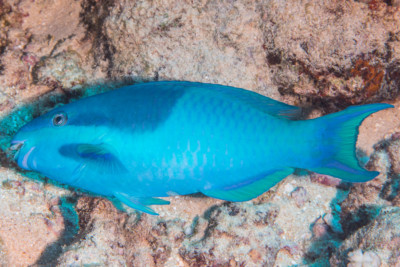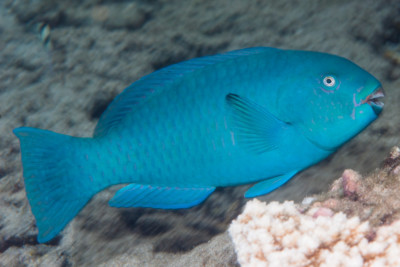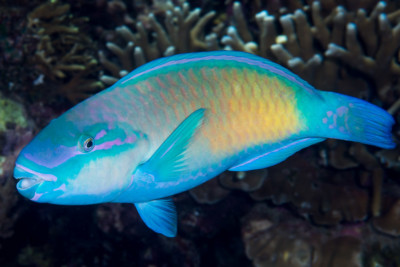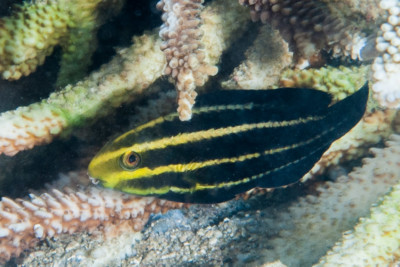heavybeak parrotfish
| Scientific name | Chlorurus gibbus |
|---|---|
| Descriptor | Rüppell |
| Year of description | 1829 |
| IUCN category (World) | LC |
| Family | Scaridae |
| Genus | Chlorurus |
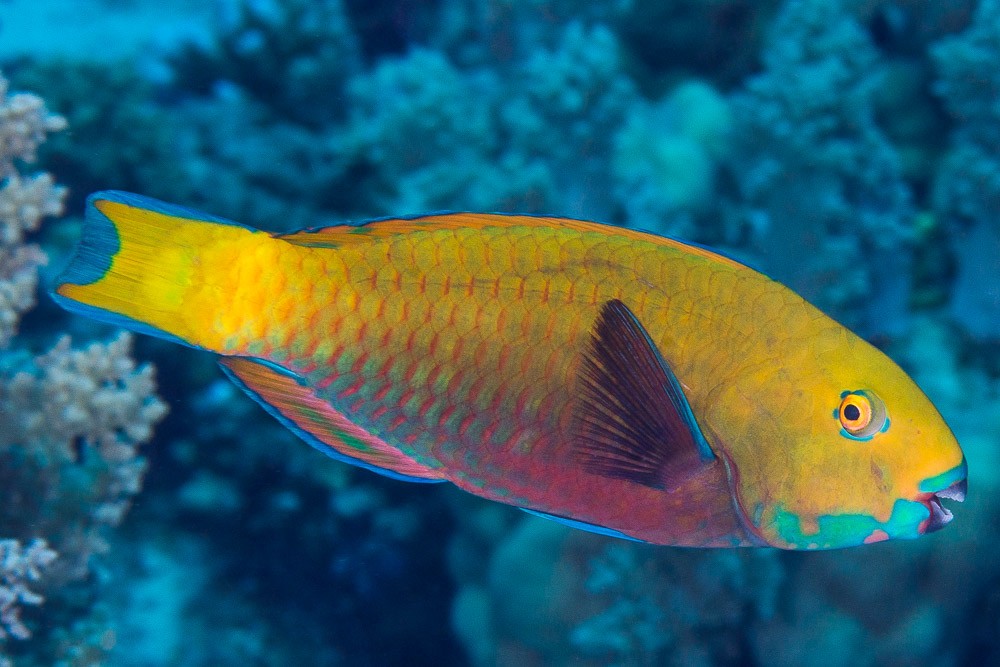

Introduction
The Chlorurus gibbus is one of the most common heavybeak parrotfish. It can be found in a large part of the Pacific Ocean, including the Great Barrier Reef. It inhabits shallow waters of reef areas and lagoons. It can be confused with the Chlorurus strongylocephalus and Chlorurus microrhinos.
Who is it?
Morphology
-
Average size50 cm
-
Maximum size70 cm
-
Average size50 cm
-
Maximum size70 cm
How to recognize This fish ?
The Chlorurus gibbus is a heavybeak parrotfish with a yellow/red coloration evolving into green as it ages. It can reach up to 70 cm in length and live at least 14 years.
In the initial phase, the Chlorurus gibbus has a yellow body with green/blue edges. Its abdomen, pelvic and pectoral fins are dark red with a green edge.
In the terminal phase, the body is gray-green. The scales are surrounded by a pink/orange line. The thorax is blue-green and its abdomen is pale yellow/green with 2 slight stripes. Its head is purple and its lips and eyes are lined with blue as well as its cheek.
The dorsal and anal fins are a succession of lines: blue, pink, purple and green. The bump on its snout only appears in the terminal phase.
Sexual dimorphism
The juveniles are dark.
Behaviour & Life cycle
-
dietherbivorous
-
Sociabilityliving in a group or alone
-
territorialNo
-
Way of livingdiurnal
The Chlorurus gibbus is usually in a group. Like its relatives, it feeds on algae by nibbling on corals. In this way, it wears down its teeth and contributes to sand generation.
Reproduction
-
Reproductionovipare qui pond en eau libre
The Chlorurus gibbus is an oviparous fish that spawns in open water.
Harmless species
This species does not represent any particular threats to humans when encountered in its natural environment.
Origin and distribution

Conservation status of populations (IUCN)
What is its habitat?
Natural environment characteristics
-
Depth0 - 50 m
Biotope presentation
It is a fish that lives in shallow waters.
Species of the same biotope
Fishkeeping
Not recommended
We do not recommend keeping this species in an aquarium. It has unpredictable needs which, if not met, generate significant stress, potentially leading to a shorter life expectancy, an interruption of its growth or the development of pathogens.
To go further
Sources & Contributions
Participation & Validation
The Fishipedia team and specialist contributors are committed to providing high-quality content. However, although the information comes from scientific sources or testimonials from specialists, the cards may contain inaccuracies.

Alexandre Dumaine

Marc Raggi
Translation
Translation done with the valuable contribution of our translators, who make this information available to a wider audience. We sincerely thank them for their commitment.
Bibliographic references
A Review of Parrotfishes (Perciformes: Scaridae) of Taiwan with Descriptions of Four New Records and One Doubtful Species - Yun-Chih Liao - Kwang-Tsao Shao - I-Shiung Chen - Zoological Studies - 2004.
Life histories predict vulnerability to overexploitation in parrotfishes - Brett M. Taylor - Peter Houk - Garry R. Russ - J. Howard Choat - Coral Reefs - 2014.
Studies on the Reef-Dwelling Fishes of India - Parrotfishes - R.P. Barman - S.S. Mishra - Zoological survey of India - 2005.
The functional morphology, systematics and behavioural ecology of parrotfishes (family Scaridae) - D.R. Bellwood - James Cook University - 2009.
Scientific partners
Tags
Species of the same family
Same genus
Species of the same biotope
